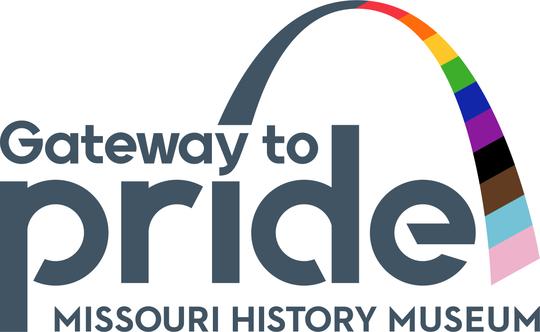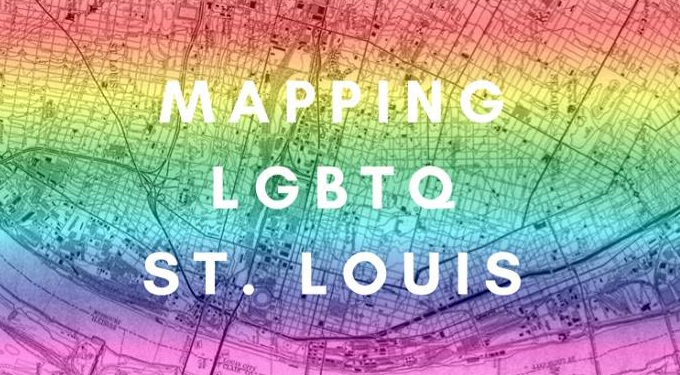Conservation Advice
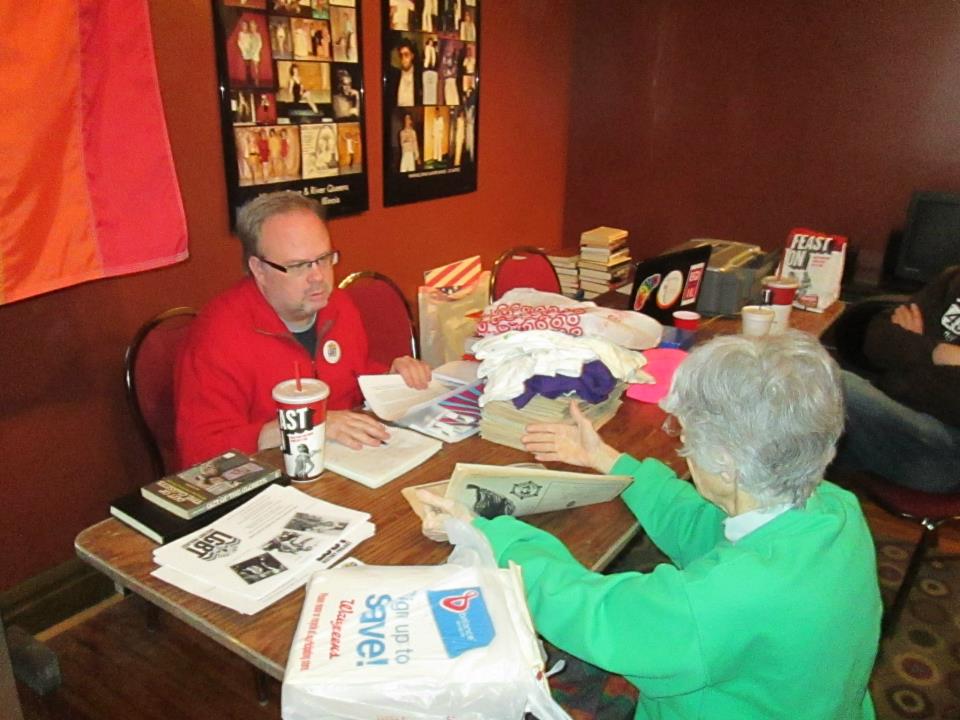 One of the services of the Project is to assist individuals and organizations with the historic preservation of LGBT-related artifacts, documents, film/videos, and photographs. Obviously the Project encourages the St. Louis community to donate original items to the Project for preservation, however we also are happy to photograph, scan, and copy items that the Project can use for research and display purposes. If you have something to donate or let us scan/photograph, please let us know.
One of the services of the Project is to assist individuals and organizations with the historic preservation of LGBT-related artifacts, documents, film/videos, and photographs. Obviously the Project encourages the St. Louis community to donate original items to the Project for preservation, however we also are happy to photograph, scan, and copy items that the Project can use for research and display purposes. If you have something to donate or let us scan/photograph, please let us know.
Here are some resources to assist with your own preservation efforts:
1978 Pride
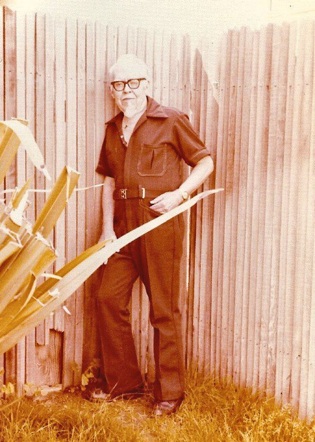 Celebration: Through A Man's Eye
Celebration: Through A Man's Eye
By Galen Moon, GAYLIFE Magazine 1978
GayPride Weekend at the University of Missouri at Columbia, (Sept. 29-30 and Oct. 1, 1978) was a high point in my 76 years of living: an open statement by several hundreds of people, saying, "This is who I am, no longer do' I have to hide!"
It was also a milestone for the University of Missouri: the implementation of the rights of gay students to share campus facilities with other organizations for educational, political, and social activities. It was a particularly neat way of saying, to those who fought for seven years to legally practice them, "See, we are not monsters. We are affable human beings, capable, understanding, and willing to be productive parts of society."
My prayer is that the success of Gay Pride Weekend at Columbia becomes the door-opener for many of the hundreds of closeted gays on UMC campus' (and elsewhere) so they will step out and enjoy the reward of living free of the fear of letting their masks slip.
In 1948 the boy my partner and I had reared as a son found himself confronted with bigotry and ignorance in Princeton. There was no place to turn for backup strength. The several fraternity brothers he knew were too scared to stand with him. NOW, with an organization at hand, gay students can be honest.
This, as you have already discovered, is a highly personal recapitulation of that momentous Gay Pride Weekend. (Actually all reviews are such even though the reviewer tries to assume an objective viewpoint.)
I rode to Columbia with the handsome young photographer who did the pictures in this magazine, and a talented young black student in Forest Park Community College at St. Louis.
Anticipation had run high in St. Louis. We admired the members of Gay Liberation UMC and encouraged their chosen leaders to step out boldly. This just had to be a success!
Not only Columbia but the whole state had to learn the truth.
From the moment of arriving Friday evening, we found people and big things happening—beautiful, happy being, at ease, comfortable, and who's afraid? This is me, sorry if you don't like it! Pleasant, happy women; confident, friendly men—people from everywhere: Kansas City, St. Joe, Rolla, Springfield, St. Louis, Belleville (Ill.). Students from UMKC and WUSL, possibly priming their hopes for similar accomplishments.
Elaine Noble was the EVENT of Friday evening. EVENT is the word because with her upfront political stance and discerning analyses she can well be a "role model" for the young gay person trying to decide on a career.
She is definitely a "direction pointer" and proof that gay people can get into "the system" and exert some influence with "good sense input". I was personally pleased when, after her talk, she said to me, "Send me a tape of that 'Queer for 70 Years' thing you're doing tomorrow. I have to get back to Boston." (Glenda sent the tape.)
Winston, Richard and I were put up in a warm and gracious household--we and five others--and our hosts added to the pleasure of the Gay Pride Weekend in Columbia.
Saturday: workshops and discussion groups from 10 a.m. to 4 p.m. and the movie WORD IS OUT at 2 p.m. and 7 p.m. with a dance to begin at 9 p.m.
Which one? I heard them asking. Richard is doing one called Anita's Fruits: Homophobia. Terry and Jim are dealing with Coming Out and something from the Advocate Experience. Judy and Sue are into long term relationships with the title, Gay Lifestyle Is Not A Battle. In Dave's room they are exploring Behind the Masks. And Galen's telling about being Queer for 70 Years. Even though the sessions will be repeated you can only participate in two of them.
TV cameras and radio taping machines are around but the operators are considerate and ask if it is okay. A few people withdrew at once from my session but, apparently after thinking it over, all but one returned and took their seats while the camera rolled and the tape deck turned.
WORD IS OUT--a very positive account of various gay lives; a movie to which gay people respond with hope that family, friends, educators, law makers, and others will realize the reality and the humanness our being--THAT WE ARE!
That dance! Real Gay Pride! The ballroom was crowded. Smiles and laughter and as many dance styles as there were people. Great for getting acquainted and having fun. A sudden hush and floor almost empties--the TV camera has rolled into the room. "What tha hell," one person said, "I don't care who knows it. I'm gay and I like to dance!" Soon the corner on which the camera was focused was full of dancers.
Well after midnight our hosts and their eight house guests assembled in the living room to sum up the happenings. Conversation ranged from what has been, what ought to be, to what is...mistakes, dreams, hopes...assurance that gay can be good.
Gay can also be concerned and a Sunday morning meeting of the Missouri Coalition for Human Rights was very businesslike and purposeful, covering plans and programs for the coming year.
At two in the afternoon we attended religious services in the campus Green Chapel. Rev. David Pelletier of M.C.C./St. Louis interpreted the words of encouragement and love. The offering was sent to the Californians fighting against the Briggs effort to legally discriminate against gays.
Coming home, we talked about how good we felt and how everyone had seemed to feel comfortable and friendly toward others. A real indication that the hope and purpose of the Gay Pride Weekend had succeeded. Let's do it again!
1960s Judy Gooch
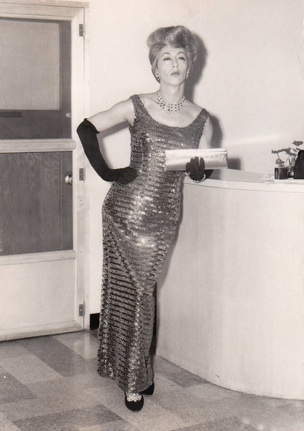 William Thomas Juden (Judy Gooch): A St. Louis Character
William Thomas Juden (Judy Gooch): A St. Louis Character
By Jean Brunton
I met Judy in 1966 when I first moved to St. Louis. Judy lived down the street in the Eugene Field Apartments near Gaslight and Newstead, across from the Rex Cafe. At that time many gays, especially younger ones, lived in that area. You could open the door to your apartment and yell, “Anybody going to The Gate or Shelly’s?” And somebody would be ready. You could take the bus or the trolley to the bars. Also Bob Martin’s was at 12th and Olive in those days (Bob was still alive then). Judy and Bobby Gousettis met in 1952 when he came back from Korea. Their relationship was like all ups and downs, but they remained together until Judy died in late July 1968 of Hodgkin’s disease.
Judy was from Dexter, Mo. in the Boot Heel and had always wanted to be a Show Boy. He left home right after the war and danced in New York but returned to Missouri and landed in St. Louis after living in Detroit for a while. I heard many stories from Judy and they are mostly very short, but some are funny.
One Halloween, Judy talked Bobby into going in drag. Bobby was about 5' 6" tall and a blond Greek muscle boy with a great body. Bobby also smoked cigars. Everybody piled into Bobby’s' car and left to go out. Bobby stopped for gas. The filling station attendant came out to help these lovely ladies he saw drive up, but when Bobby rolled down the window and took the cigar out of his mouth and said, “Filler up Mac,” the attendant saw a blond with very broad shoulders, a very Greek nose and the hands of a steelworker looking back at him. He is still probably trying to figure those girls out today. That would have been in the late 1950-early 1960s.
Judy was a member of some of the early gay organizations. Others were afraid to join for fear of getting their names on a list. Judy’s response was, “Ugh-gh dizzy bitches. They will order nude pictures from Sweden—but ‘Oh! Get my name on a list! Heavens no!’ Ugh-gh dizzy bitches!”
Another Halloween Judy arrived at The Gate and on that night the place was packed. The Gate was a long narrow building and the track was basically front to back, back to front. Judy was wearing a beautiful gold and white gown, and carrying a black and white bullwhip. I remember asking why and to my best recollection, the answer was something along the lines of, “To keep these dizzy bitches in line.”
In the early 1960s Judy decided to wear a hat. This hat was covered in feathers, which hung down over her face. As you walked up and said hello, Judy would blow on the feathers, they would go straight up in the air, and Judy would say, “Oh, hi! How are you?? (As the feathers floated down over her face again.)
As soon as Halloween was over Judy gave everything away and started over. I asked why and the response was, “Well if someone says ‘oh, I liked this or that’ - I can say, ‘oh I gave that away yesterday.’ And nobody would be angry or jealous.
Most of Judy’s friends are now long gone. Michael in 1970, Jim in the 1990s, and Bobby I lost track of, but he would be in his 80s now. After Judy died Bobby did date for awhile but to my knowledge, never had a long term relationship again.
After contacting a long time friend, he added some other bits of information. Judy’s father left him well off (over a million dollars) in 1968. Since there were no close relatives and since Missouri does not recognize our relationships, some distant relatives inherited it all.
Judy knew all the girls at the cosmetic counter at Famous-Barr and bought fur coats for several of them.
He spent a lot of money on clothes and jewelry and one time they went to California on a shopping trip. They stayed at an old Art Deco Hotel on Venice Beach that Judy had stayed at while touring. That was like going back in time.
The last few years that they were together, Saturday night was spent having dinner, and reading the Sunday paper that came out Saturday night. Later, when Judy became ill, Bobby spent his evenings and weekends at Judy’s side.
On July 29, 1968 I came home from work about 5 p.m. At about 5:30 p.m. Bobby came to my door and banged on the door violently. When I opened the door he came in crying and a complete madman. The funeral was on the 6th in Dexter, Mo. Judy’s nearest and dearest friends were all that were there. Bobby, still inconsolable; Eddie Laxton, Jim Greene, Michael Palmer, Marvin and myself were pallbearers. Two ladies from town came and had known him growing up. They said, “He always wanted to be a Show Boy.” And little else that I remember—a drag queen named Branka and his partner George were there also.
I unfortunately did not know him for that long myself, however, 44-years after his passing, I still think back fondly. Hopefully, I will remember some other stories that Judy told me from back in the day.
1901 Autobiography
Preface: This excerpt is from the first known autobiography written in America by a self-described homosexual. We do not know his real name or have an image of him. The author, who was thirty years old when he published the autobiography in 1901, adopted the pseudonym Claude Hartland. A publisher of medical textbooks in St. Louis, Missouri, printed his book—a slender volume in a green, clothbound edition, which Hartland titled The Story of a Life. The narrative's one-hundred pages detail Hartland's physical symptoms and personal idiosyncrasies as a kind of case history for the benefit of the local medical fraternity, to whom he dedicates the book. Records show that Hartland's memoir actually reached few of those physicians, falling into obscurity for decades until San Francisco's Grey Fox Press reissued it in paperback in 1985, with a foreword by C. A. Tripp. David Bergman, James Gifford, and Jonathan Ned Katz have recently joined Tripp in recovering Hartland's memoir, including it in developing histories of gay and lesbian lives and life writing.
The Story of a Life (page 77).
By Claude Hartland
I did not like St. Louis at all , but made up my mind to spend the winter (1899-1900) any way and begin to look about for employment.
I had never done anything but teach, and being perfect stranger, I did not now hot to go about finding work. I was worn out with mental labor and resolved to pursue it no further.
I was not fitted for manual labor of any sort, and while walking about the streets wondering what to do, a sign, "Ladies Tailoring," on a window, caught my attention. I knew that I had not forgotten how to sew, so I boldly entered and asked for work.
It was during the busy season, and help being scarce, I was taken on one half-days trial, at the end of which time I was employed.
Soon after this, I met a young man one evening on the corner of Sixth and Olive Streets, who was affected as I am and we knew each other at sight. I spent that night at his house and we had a most delightful time. He was gentle, refined and very interesting, and we soon became fast friends...
I soon met several men in a social way, but so far had fallen in love with none...
One Sunday evening, while seated in the Columbia Theatre watching the show, a man came in and took the seat beside me. He was very handsome and had a sweet, fascinating face, yet I could see that he had been drinking heavily.
He soon began a conversation with me, and I found his voice as sweet and interesting as his face. We continued in conversation, and when the show was over, we were not far from being in love with each other.
